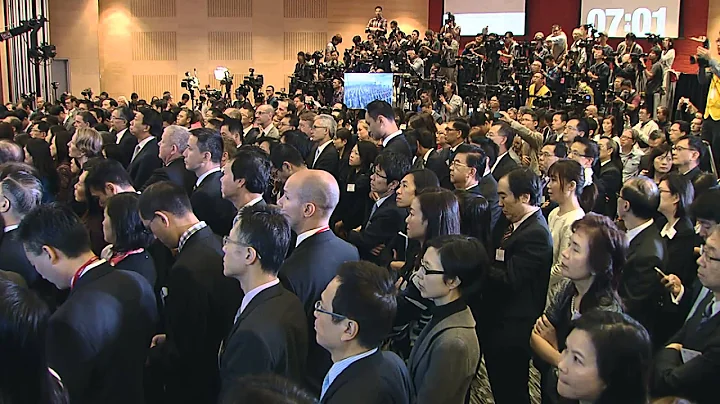As of March 19, 2020, the Shanghai, Hong Kong and Shenzhen markets have experienced a roller coaster. The GEM index’s performance since 2020 still has a positive return of 5.38%, and the biggest decline is the Hang Seng China Enterprises Index of the Hong Kong stock market. More than 20%.

GEM performs so well. For those who like to use ETF to invest, it is necessary to choose a good GEM category ETF. Friends who often read my articles know that I like to participate in equity market investments through ETFs. The main benefits of ETFs are as follows:
1. Index investment diversifies the risks of individual stocks. In the past, we invested in a listed company, but now we invest in a basket of listed companies. That is to say, it can be understood that you are still participating in the investment of listed companies. The buying and selling operations are the same as buying stocks, except that ETF is a collection of individual stocks.
2. There is no stamp duty on exchange-traded ETFs. Whether you are a quantitative investor doing high-frequency trading, or a retail investor who likes to do T during the day and enjoy the pleasure of trading, through ETF trading, frequent buying and selling can save a lot of stamp tax fees.
3. Compared with investing in stocks, investing in ETFs has shifted from individual stock research to industry or industrial chain research. To a certain extent, it is a top-down investment. For example: Although I don’t know which company in the new energy vehicle industry chain will be able to obtain excess returns in the future, I know that the new energy vehicle industry chain will be a core investment opportunity in the next few years. Therefore, ETF itself is a tool. What we care about is understanding the design concept of each ETF, using it skillfully, and investing at the right time.
The author has sorted out the listed ETFs currently on the market that invest in the GEM field. There are 14 in total, sorted by size as follows.

It can be seen that most of the ETFs currently investing in the GEM market mainly track the 399006 GEM index. The largest one is E Fund’s GEM ETF (159915), with a scale of more than 15 billion; in addition, the GEM ETF under Huaan Fund The GEM 50 ETF (159949) tracks the GEM 50 Index (399673), and the latest scale has reached 7.4 billion.
In 2019, China Fund , on the basis of the previously listed GEM ETFs, also issued two GEM Smart Beta ETFs, namely the Venture Blue Chip ETF (159966) that tracks the Venture Blue Chip (399295) index and the Venture Growth ( 399296) Index's Growth ETF (159967) is very in line with the tool design of current investors to differentiate between growth and blue-chip companies.
There are a total of 4 types of GEM index compilations in the market above. The performance of these indexes will largely determine the performance of related ETFs that track the index. Therefore, observing and understanding the compilation of these GEM indexes can better help us understand The characteristics of the index provide us with ideas for investment in different market environments. The author compared the above four indexes. At the same time, the author learned that the market has also recently issued new GEM-related ETFs, namely the Chuangxue 88 ETF issued by China Life Insurance (tracking index: 399291) and the China Merchants Fund. The entrepreneurial market ETF (tracking index: 399293) is also included in the comparative analysis.

Note: The data from 2020 to the present is as of March 19, 2020; the best performance increases and decreases within a certain period are marked in red.
From the table, you will find that, in addition to the GEM index, the performance of other related indexes involved in the GEM field is different in different years. For example, the growth index increased by more than 100% in 2013, while in 2014 and In 2015, the performance of the ChuangSelect 88 Index won the championship for two consecutive years; in the environment of the financial deleveraging market in 2018, the Entrepreneurship Blue Chip Index, represented by blue chip stocks, became more resilient. Behind the different performance of these indexes is the result of different principles of index design. Let's briefly analyze one by one:
(1) GEM index: After excluding 10% of the GEM stocks after the average daily trading volume in the past six months, select the top 100 stocks from high to low according to the average daily total market value to form the constituent stocks . Number of constituent stocks of
: 100.
(2) GEM 50: Examine the average daily trading volume of stocks in the selection space (the GEM 50 index is selected from 100 sample stocks of the GEM index ) in the past six months, and select the top 50 stocks. Constituent stocks of the index. Number of constituent stocks of
: 50.
(3) Growth (Entrepreneurial Momentum Growth): The index first selects the top 30% of stocks (average daily free float market capitalization) through the market value method, and then uses growth factors (revenue growth, profit growth, EBIT growth), momentum Listed companies are screened from two dimensions of factors. Number of constituent stocks of
: 50.
(4) Entrepreneurship Blue Chip (Entrepreneurship Low Volatility Blue Chip): The index first selects the top 30% of stocks (average daily free float market capitalization) through the market capitalization method, and then uses profitability factors (gross profit margin, net profit margin), accounting soundness factors (total should Comprehensive screening of listed companies is carried out from five dimensions: accounting earnings, net operating assets), investment soundness factor (total asset growth rate), default risk factor (debt coverage ratio) and low volatility (volatility, beta, residual volatility). Number of constituent stocks of
: 50.
(5) Chuang Selection 88: After excluding companies with a pledge ratio of more than 70% and companies with a goodwill ratio of more than 100% of net assets, the index is ranked from high to low by daily average total market value, and stocks from 101 to 188 are selected. Constituent stocks. Number of constituent stocks of
: 88.
(6) Entrepreneurship market: The index excludes companies with a pledge ratio of more than 70%, companies with goodwill accounting for more than 100% of net assets, companies with negative operating cash flow in the past three years, and stocks that have been suspended for too long. , arranged from high to low by daily average total market capitalization, and the top 50 stocks are selected to form the constituent stocks. Number of constituent stocks of
: 50.
Through the comparison of index selection methods, we can see:
1. Among the above six indexes, the GEM Index, GEM 50 Index, Venture Select 88 Index and GEM Large Market Index generally use the market value method to screen individual stocks; The Growth Growth and Entrepreneurship Blue Chip Index selects stocks through factors and is a Smart Beta index.
2. The GEM Index is a pure market capitalization method for stock selection. The GEM 50 Index adds liquidity (average daily trading volume) considerations to the GEM Index stock selection. It can be seen from the data that in 2016, when liquidity was relatively poor, -In 2018, the performance of the GEM 50 was weaker than that of the GEM Index. In 2019, when market liquidity was abundant and investors preferred small-cap stocks, the GEM 50 Index performed better.
3. Before screening individual stocks using the market value method, the Venture Market Index and the Venture Select 88 Index screened and eliminated issues such as pledges and goodwill that have long been criticized by GEM companies. One selected the top 50 companies by market value to form a portfolio, and the other selected 101 -188 companies make up the portfolio.
Many people’s first reaction is that the top 50 company index must be better, but judging from the results, the ChuangSelect 88 Index performs better in certain years! In the bull market of the GEM from 2014 to 2015, due to the liquidity premium, the Chuang Select 88 Index won the title of index increase list for two consecutive years. Since 2020, the GEM has gradually emerged from the bull market. As of March 19, the Chuang Select 88 Index The performance of the 88 index is also the best. 2016-2018 is the time for the GEM to adjust. Large-cap companies are relatively more resilient due to performance guarantees. Therefore, we can see that the GEM index not only performed better than the GEM 88 Index from 2016 to 2018, but was also stronger than the GEM Index. Therefore, in the future, if investors judge that there will be adjustments to the GEM, they can choose the GEM market for allocation; when market liquidity is sufficient and the overall performance of A-shares picks up, the flexibility and performance of the ChuangSelect 88 Index may be better.
4. Because the Entrepreneurship Blue Chip Index pays more attention to fundamental information and adopts a low-volatility approach to investment, the overall factor performance is reflected in being more resilient in falling markets, and its performance in rising markets is not inferior to other indexes.
In 2019, the Blue Chip Index rose by 51.20%, becoming the only related index with an increase of more than 50%. It also significantly outperformed many actively managed funds. It really confirms the saying, just buy the index in the bull market. However, Smart Beta index is not necessarily smart. The results obtained by quantitative indicators only reflect the past and cannot reflect future performance advantages. It requires us to choose specific factors for investment based on the characteristics of the factors themselves and by judging the future market style.If investors have their own judgment on the future performance of the GEM, for example, if they determine that the growth factor is stronger than the fundamental factor, then perhaps choosing the GEM index will provide a better return on investment than the entrepreneurial blue chip index.
Of course, when investing in the GEM market, in addition to considering the compilation of the above-mentioned indices, the trading liquidity of the ETF types invested also needs to be taken into consideration. After all, the activeness of transactions will also affect our participation in the market. ETF trading experience.





















